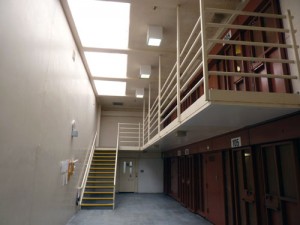by Michael Montgomery, California Watch
With severe overcrowding easing in state lockups, California is winding down a controversial deal with the nation’s biggest private prison operator and will bring thousands of inmates housed in facilities as far away as Mississippi back to California within the next few years.

Currently, some 9,500 state inmates are serving sentences in prisons in Arizona, Mississippi and Oklahoma operated by the Nashville, Tenn.-based Corrections Corporation of America. As part of a strategic plan announced in April, the state Department of Corrections and Rehabilitation will transfer those inmates back to California facilities by 2016.
The return of the first group, 600 inmates housed in Arizona, will begin “immediately,” said Corrections Secretary Matthew Cate. Another 4,000 prisoners will return to California in 2014.
Steve Owen, spokesman for the Corrections Corporation, confirmed the company agreed to modify its contract to lower the total number of California inmates housed in out-of-state facilities from 9,588 to 9,038 for this year. The contract guarantees 90 percent occupancy.
The revised contract will reduce California’s fee to the private prison group by $67 million for the current fiscal year, according to corrections spokeswoman Dana Simas. The state will save another $14 million in 2012 by cutting staff positions for the program, which is administered in Sacramento.
California is paying the Corrections Corporation $61 to $72 per prison bed per day, making the original contract worth more than $280 million for 2012-13, according to the Legislative Analyst's Office and corrections department figures.